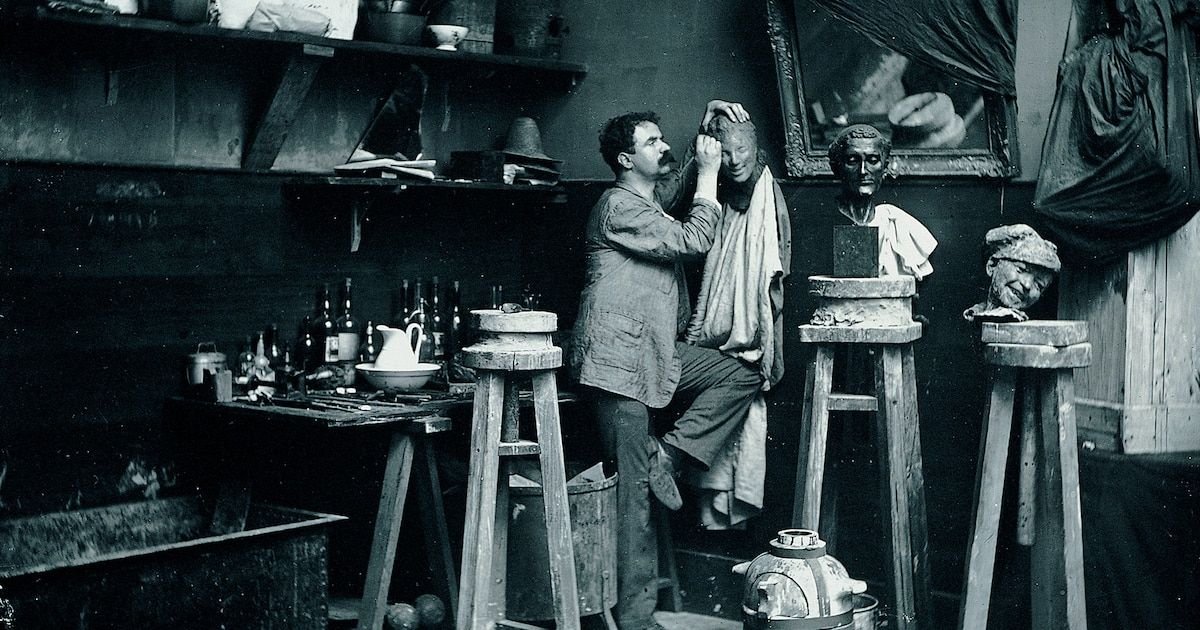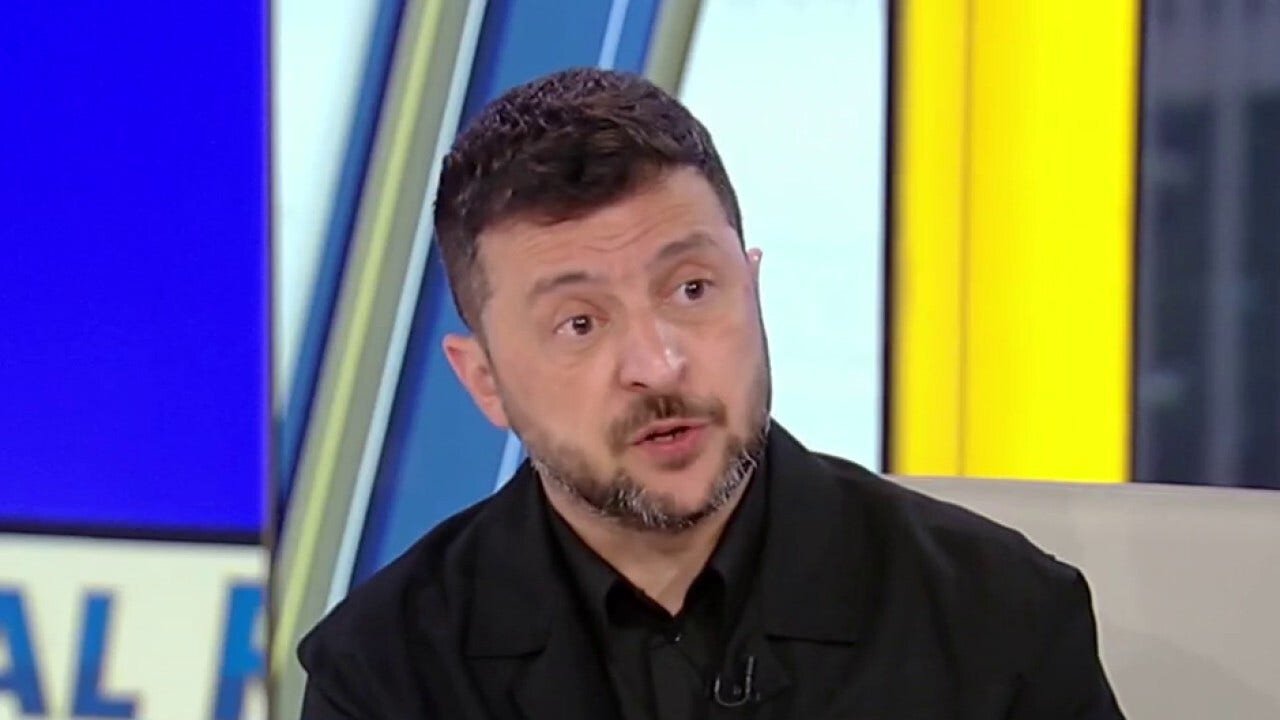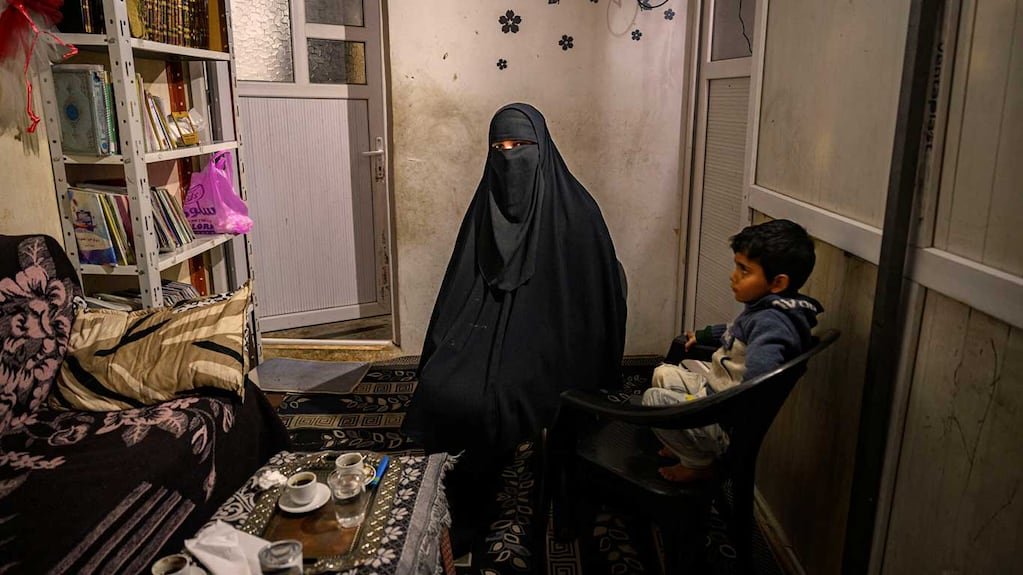INTERNACIONAL
Medardo Rosso, el “Salieri” de Rodin: un escultor enigmático que fascina a los artistas contemporáneos

El legado de Medardo Rosso ha resultado difícil de rastrear para los investigadores actuales, en parte porque el propio artista destruyó toda la correspondencia que recibió, según relató su bisnieta Danila Marsure Rosso, quien administra su patrimonio. Esta decisión, motivada por su deseo de mantener la privacidad, ha contribuido a que la figura de Rosso permanezca en la sombra del arte moderno, a pesar de haber sido uno de los escultores más innovadores de su tiempo.
La nueva retrospectiva en el Kunstmuseum Basel busca arrojar luz sobre la obra de este escultor italiano nacido en Turín en 1858, cuya influencia ha sido reconocida por artistas y expertos, aunque su nombre resulte desconocido para la mayoría de los comerciantes y subastadores de arte. La directora del museo, Elena Filipovic, explicó que mientras la mayoría de los galeristas y coleccionistas no identifican a Rosso, entre los artistas su mención genera entusiasmo. La exposición reúne esculturas, fotografías y dibujos que exploran escenas urbanas, cafés y nubes, y ha convocado a 60 artistas contemporáneos que se sienten afines a su legado, entre ellos Louise Bourgeois y Francesca Woodman.

La obra de Rosso se caracteriza por figuras y bustos que parecen surgir de la cera, el yeso o el bronce como apariciones en movimiento. Una de sus piezas más conocidas, Ecce Puer (1906), representa la cabeza de un niño envuelta en una sábana, mientras que Enfant Malade (1893-95) muestra la inclinación de un niño enfermo, en una postura que sugiere fragilidad y cercanía a la muerte. Estas esculturas, de dimensiones ligeramente menores a las reales, generan una sensación inquietante, como si los rostros pudieran parpadear. El color amarillento y enfermizo de la cera refuerza esa impresión, alejándose de la belleza tradicional de otros escultores como Degas.
La vida de Rosso estuvo marcada por una personalidad compleja y un entorno bohemio. Tras abrir su primer taller en Milán en 1882, se relacionó con el grupo artístico Scapigliatura, conocido por su espíritu anarquista y socialista. Su paso por la Accademia di Belle Arti di Brera terminó abruptamente tras ser expulsado por agredir a un compañero. A pesar de estos incidentes, pronto se estableció en París, donde atrajo a mecenas y obtuvo encargos, consolidando su carrera internacional.

La relación de Rosso con Auguste Rodin fue inicialmente de admiración y amistad, pero terminó en una disputa pública sobre la influencia mutua. Mientras Rodin optó por la monumentalidad y el marketing profesional, delegando la fundición de sus obras y contratando fotógrafos reconocidos como Edward Steichen, Rosso prefirió trabajar en pequeño formato y controlar personalmente la promoción y la imagen de sus esculturas.
Según Filipovic, “él entendía que la fotografía y la forma en que se veía la obra también formaban parte de la obra”. La exposición en Kunstmuseum Basel incluye unas 200 fotografías tomadas por el propio Rosso, muchas de ellas impresiones frágiles y de pequeño tamaño, que evocan la estética de la fotografía de espíritus victoriana.
Heike Eipeldauer, curadora y experta en Rosso del Mumok de Viena, describió al artista como una persona persuasiva y apasionada, pero también desconfiada y obsesiva. Estas características provocaron conflictos personales y profesionales: su esposa lo abandonó, perdió amistades por disputas económicas y su relación con Rodin se deterioró irreversiblemente. “Eran amigos, hasta que dejaron de serlo”, afirmó Filipovic en declaraciones recogidas por el diario inglés The Guardian.

La producción de Rosso fue limitada, en parte porque él mismo se encargaba de fundir sus esculturas, lo que reducía la cantidad de obras disponibles. Además, prefería mostrar sus piezas en estudios, hogares y exposiciones, en lugar de emplazarlas en espacios públicos. Esta estrategia, opuesta a la de Rodin, contribuyó a que su obra no alcanzara la misma notoriedad. El propio Rosso organizaba sesiones en su taller donde invitaba a grupos a observar el proceso de creación y fundición, como si se tratara de una performance. Filipovic señaló: “Se trataba de entender que hay magia en ese hacer”.
El carácter experimental de Rosso también se manifestó en la forma en que instalaba sus esculturas en las casas de los coleccionistas, eligiendo ubicaciones poco convencionales que desafiaban la lógica y buscaban provocar reacciones. Filipovic lo calificó como un “controlador”, pero sugirió que esa cualidad resulta deseable en un artista.

La falta de documentación personal y la escasez de biografías han dificultado la investigación sobre Rosso. Mientras existen decenas de libros sobre Rodin, no hay biografías dedicadas a Rosso. Su récord en subastas es de unos 450 mil dólares por una versión de Enfant Juif vendida en Londres en 2015, muy por debajo de los 20 millones alcanzados por la obra Eternal Springtime de Rodin en Nueva York en 2016.
La muerte de Rosso en 1928, a los 69 años, fue consecuencia de una serie de complicaciones tras un accidente en el que se le cayeron negativos de vidrio en el pie, lo que derivó en la amputación de varios dedos, luego parte de la pierna y finalmente una infección fatal. Su vida y obra, marcadas por la experimentación y la independencia, han dejado una huella difícil de rastrear pero profundamente influyente en el arte contemporáneo. Guillaume Apollinaire llegó a describirlo como “sin duda el escultor vivo más grande”, y su influencia se percibe en la obra de numerosos artistas actuales, aunque su nombre siga siendo un enigma para el gran público.
[Fotos: KunstMuseum Basel]
INTERNACIONAL
Reporter’s Notebook : A ‘Letter’ To Zelesnkyy Re The Peace Plan

NEWYou can now listen to Fox News articles!
Having covered Ukraine … and Russia … for over three decades, especially the war between the two countries for the last several years, I’ve naturally been fascinated by the latest Trump administration effort to broker peace.
The reaction I’ve been getting from contacts in Ukraine to the 28-point plan to end the war is not all that positive.
«It’s not worth the paper it’s written on,» said one observer.
«Any deal would have to include Ukraine…and Europe,» noted another.
The overall consensus of analysts is that the document is slanted heavily towards Moscow. The man at the center of things, Ukrainian President Volodymyr Zelenskyy, has been diplomatic in various statements, basically saying he’s «reviewing the points» aiming at arriving at a «dignified peace.»
Ukrainian President Volodymyr Zelenskyy meets with Fox News correspondent Greg Palkot in Kyiv, Ukraine, in April 2024, during coverage of the ongoing war with Russia. (Fox News)
US AND RUSSIA DRAFT PEACE PLAN FOR UKRAINE REQUIRING MAJOR CONCESSIONS FROM KYIV
There are all sorts of talks happening now between the U.S. and Ukraine and among European leaders. We’re even hearing from Russian President Vladmimir Putin. It’s no wonder: The stakes in this war for Europe and the world are enormous. If I were to send a quick note to Zelenskyy, it would go something like this:
Dear Volodymyr,
So far so good. You haven’t freaked out, and you’re promising to engage. Rejection of this plan out of hand would have been a non-starter.
TRUMP, ZELENSKYY AGREE ON CRUCIAL ASPECT TO END UKRAINE WAR: ‘GOOD COMPROMISE’
You’re staying cool (though a bit grim and determined), and you’re talking to people.
My overall advice is … pick your fights, don’t sweat the small stuff, and keep the big picture in mind.
I know what your country is going through. Every time I’m in Kyiv, I go to the same military cemetery outside the city, and it keeps getting bigger and bigger and sadder.
TRUMP’S FIRE FADES ON RUSSIA AS HE PULLS TROOPS, AVOIDS PRESSING XI ON OIL
So, as to the points of the plan: There are a lot easy «gimmes» to Russia. Re-joining the G-8. Gradual dropping of sanctions. Granting of amnesty for everything Russian troops have done. I know this stuff is going to stick in your craw, but little of it affects your country’s future.

Memorial flags and photos commemorate fallen Ukrainian soldiers amid the ongoing war with Russia. (Fox News)
I mentioned that you shouldn’t «sweat the small stuff.» Some of the points might sound like a big deal. Like prohibiting «Nazi ideology» in Ukraine. And adopting «EU rules on religious tolerance and linguistic minorities.» That’s pretty much window-dressing for Moscow. Having the Russian language and Russian church regain official status is not horrendous.
In fact, the plan’s glass is at least one-third full for you guys. Confirming your sovereignty. Russia expected not to invade you again. You will receive reliable security guarantees. Rebuilding pledges and humanitarian promises. They are all good. Just nail down the specifics. Get all sides to commit for sure.
COULD TRUMP’S GAZA CEASEFIRE PLAN OFFER A BLUEPRINT FOR PEACE IN UKRAINE?
Now to three of the points which cross, according to analysts, your red line.
Like handing over the rest of the eastern Donetsk region to Russia even though Moscow’s troops haven’t even taken it. The region is referred to as a demilitarized zone in the plan. A «DMZ» ala the divider between North and South Korea. Well, hold them to that. No troops from either side. Tough security on both sides. A neutral body running things. And see if you can get them to not call it Russian!
Then there’s the reduction by a third of your military. Troop strength limited to 600,000. That’s a huge cut, but it’s still not a bad-sized force. That is if…it was properly trained, well-armed, and finely-positioned. Guarantees are needed for all of this to happen.

Fox News senior foreign affairs correspondent Greg Palkot reports live from Kyiv, Ukraine, as the U.S. House approves a long-stalled aid package for Ukraine. (Fox News)
ZELENSKYY WARNS UKRAINE FACES ‘DIFFICULT CHOICE’ AS US PEACE PLAN HITS MAJOR HURDLE
And then there’s the other red line : No NATO troops in Ukraine. That would seem to scupper the plan to have foreign peace-keepers on the ground, which has been in the works, to monitor the peace. A possible compromise? They’re stationed around Ukraine’s borders, surveillance keeps a close eye on things and rapid-response forces are at the ready.
There are also a few gimmes for the U.S. in all this, like sharing in the profits of reconstruction. But that’s the price of doing business with President Trump.
As for that Thanksgiving deadline to sign the deal? The president has already signaled he’s willing to let that slide if there’s talking.
And that other deadline? One-hundred days until a new election? I know it’s a tough time for you politically with those corruption charges getting near. It might be something you have to live with.
Anyway, for what it’s worth, that’s my take.
Negotiations will probably sink on any hard discussion of any of these main points. But you know what the old adage is : «jaw-jaw» is better than «war-war.»
For the proud people of Ukraine, who have suffered so much during this time, it’s worth your best shot.
CLICK HERE TO DOWNLOAD THE FOX NEWS APP
Sincerely,
Greg
volodymyr zelenskyy,ukraine,peacekeeping,foreign affairs
INTERNACIONAL
FAA warns airlines about flying over Venezuela: ‘Potentially hazardous situation’

Trump renews pressure against Venezuela’s Maduro
Fox News’ Lucas Tomlinson and Rep. María Salazar, R-Fla., join ‘Fox & Friends’ to discuss President Donald Trump’s increased military pressure on Venezuelan leader Nicolás Maduro and an upcoming Capitol Hill vote to condemn socialism.
NEWYou can now listen to Fox News articles!
The Federal Aviation Administration warned airlines about flying over Venezuela as it issued a notice urging them to «exercise caution» due to the «potentially hazardous situation» in the region.
The advisory comes as the U.S. has significantly increased its military presence across the Caribbean under U.S. Southern Command, deploying bombers, warships and Marines as part of an expanded campaign targeting drug-trafficking and so-called «narco-terrorist» networks operating near Venezuela.
«Operators are advised to exercise caution when operating in the Maiquetia flight information region at all altitudes due to the worsening security situation and heightened military activity in or around Venezuela,» the FAA advisory said.
«Threats could pose a potential risk to aircraft at all altitudes, including during overflight, the arrival and departure phases of flight, and/or airports and aircraft on the ground,» it added, requesting airlines to provide at least 72-hour advance notice to the FAA if they plan to fly through the area.
US NAVY DESTROYER ARRIVES IN TRINIDAD AND TOBAGO AS TRUMP TURNS SCREWS ON VENEZUELA
Members of Venezuela’s Bolivarian National Guard stand in formation as they carry out an increased security patrol along Lake Maracaibo amid rising tensions between Venezuela and the U.S., in Maracaibo, Venezuela, on Oct. 26, 2025. (Isaac Urrutia/Reuters)
Direct flights from U.S. passenger and cargo carriers to Venezuela have been suspended since 2019, but some airlines still fly over the country on their South American routes, according to Reuters.
It added that American Airlines said Friday it stopped flying over Venezuela in October, while Delta Air Lines said it stopped «a while ago.»
HEGSETH ANNOUNCES OPERATION TO REMOVE ‘NARCO-TERRORISTS FROM OUR HEMISPHERE’

A coast guard boat of the Venezuelan Navy operates off the Caribbean coast on Sept. 11, 2025. (Juan Carlos Hernandez/Reuters)
«Since September 2025, there has been an increase in Global Navigation Satellite System (GNSS) interference in the Maiquetia Flight Information Region (SVZM FIR), as well as activity associated with increasing Venezuela military readiness,» the FAA also said.
«Some civil aircraft recently reported GNSS interference while transiting the SVZM FIR, which, in some cases, caused lingering effects throughout the flight. GNSS jammers and spoofers can affect aircraft out to 250 nautical miles and can impact a wide variety of critical communication, navigation, surveillance, and safety equipment on aircraft,» the FAA continued.

The USS Gravely, a U.S. Navy warship, departs Port of Spain on Oct. 30, 2025. The warship arrived in Trinidad and Tobago on Oct. 26, 2025, for joint exercises near the coast of Venezuela, as Washington ratcheted up pressure on drug traffickers and Venezuelan leader Nicolás Maduro. (Martin Bernetti/AFP via Getty Images)
CLICK HERE TO DOWNLOAD THE FOX NEWS APP
«Additionally, since early September, Venezuela has conducted multiple military exercises and directed the mass mobilization of thousands of military and reserve forces. While Venezuela has at no point expressed an intent to target civil aviation, the Venezuelan military possesses advanced fighter aircraft and multiple weapons systems capable of reaching or exceeding civil aircraft operating altitudes, as well as potential low-altitude risk from man-portable air defense systems and anti-aircraft artillery,» it also warned.
Fox News Digital’s Morgan Phillips contributed to this report.
airlines,venezuelan political crisis,south america,military,world
INTERNACIONAL
Golpes, latigazos y abusos: mujeres encarceladas por Al Asad en Siria cuentan los horrores que vivieron

Era noviembre de 2014 y habían pasado tres años de una guerra civil que duraría otra década. Por aquel entonces, en Siria no hacía falta que una mujer luchara junto a los rebeldes que trataban de derrocar al dictador Bashar al Asad para ser arrojada en su sistema de encarcelamiento y tortura.
Bastaba con ser sospechosa de ser esposa o hija de un rebelde.
Leé también: El resultado de 14 años de guerra en Siria: violencia, desolación y un sistema sanitario desbordado
El régimen de Al Asad trataba a las familias de sus supuestos enemigos como palanca de negociación, según expresos y grupos de vigilancia de la guerra. Se apoderaban de las mujeres para utilizarlas contra sus maridos, y de los niños para utilizarlos contra sus madres encarceladas. La gente se reúne para celebrar la destitución del presidente sirio Bashar al-Assad en Daraa en diciembre de 2024 (Foto: REUTERS/Zohra Bensemra)
Tamim, que entonces tenía 34 años y era madre de cinco hijos, era la esposa de un combatiente rebelde escondido en aquel momento. Recordaba que nevaba el día en que las autoridades la llevaron a ella y a sus hijos, que entonces tenían entre 2 y 14 años, a una prisión subterránea.
Las instalaciones estaban dirigidas por la Cuarta División Blindada, una unidad del ejército estrechamente vinculada a la familia Al Asad. Tamim estuvo detenida seis meses.
De vuelta a casa, en la remota aldea de Afrin, en el noroeste de Siria, habló recientemente con The New York Times. Vive allí con su marido, excombatiente rebelde, y con el menor de sus hijos (ahora tienen siete).
Tamim fue una de las muchas exreclusas que se pusieron en contacto entre sí a través de un grupo de apoyo organizado por la Asociación de Personas Detenidas y Desaparecidas de la Prisión de Sednaya, la cárcel de peor reputación de Siria.
Desaparición y torturas
Las mujeres describieron cómo las autoridades se las llevaban, a menudo sin acusación formal ni juicio adecuado, y las hacían desaparecer durante meses o más, con o sin sus hijos, en un abismo de tortura física y psicológica. Mujeres e hios de sospechosos de ser rebeldes (Foto: Delil SOULEIMAN / AFP)
Algunas dijeron que todavía seguían en la lucha por reconstruir sus familias y sus vidas.
El primer día que Tamim estuvo detenida, dijo que los interrogadores le exigieron saber dónde estaba su marido. Cuando se negó a contestar, le golpearon la frente contra la mesa hasta que la sangre le corrió por el rostro y llegó a su boca.
Luego la llevaron a una celda diminuta y helada, donde la esperaban sus hijos. Tamim, al igual que otras exreclusas, describió cómo la llevaron a la celda a través de un laberinto de dispositivos de tortura: una silla eléctrica, cadenas que colgaban del techo. Era una amenaza no tan sutil de lo que le esperaba si no revelaba la información que querían.
Al día siguiente, dijo, los interrogadores la acusaron de contrabandear armas y la golpearon hasta que se desmayó. Shaimaa, su hija mayor, que entonces tenía 11 años, dijo que recordaba haber oído los gritos de su madre y haber visto sus magulladuras.
El tercer día fue peor.
Tras azotar a Tamim con un tubo verde de PVC, dijo que los interrogadores la obligaron a ver cómo golpeaban a sus hijos. Primero fue su hijo Baraa, de 14 años. Cuando él se desmayó, fue Shaimaa, quien dijo que los interrogadores utilizaron el mismo tubo con ella.
Después de eso, dijo Tamim, accedió a admitir cualquier cosa. La violencia cesó.
Niños separados de sus padres
Su cautiverio continuó durante más de seis meses, la mayor parte en Al Jatib, la prisión de Damasco de una rama de la inteligencia militar. Al cabo de unas semanas, dijo Tamim, los funcionarios se llevaron a sus tres hijos menores a un orfanato gestionado por el gobierno y le dijeron que no volvería a verlos. Baraa fue trasladado a la prisión de hombres adyacente.
Como documentó una reciente investigación del Times, el gobierno de Al Asad separó por la fuerza a cientos de niños de sus padres y los internó en orfanatos, muchos de ellos con identidades falsas.
Los hijos de los detenidos pueden estar entre quienes acabaron en los orfanatos, sin que se conozca su verdadera identidad.
Algunas mujeres describieron haber sido detenidas y separadas de sus familias incluso durante los últimos meses del régimen.
Meses y hasta años detenidas
Sabah Harmoush, que ahora tiene 37 años, dijo que la detuvieron en marzo del año pasado, solo nueve meses antes de que los rebeldes derrocaran a Al Asad. Su marido y los hermanos de este se habían unido a los rebeldes.
Sus hijos, de entre 4 y 13 años, fueron detenidos con ella, así como su suegra, Houda Mohammed Ajami, de 57 años.
Llevaron a la familia a la prisión de Mezzeh, en Damasco. Durante los interrogatorios, les propinaron patadas, latigazos y puñetazos, dijo Ajami, y añadió que Harmoush sufrió las palizas más duras.
Al cabo de 20 días, sus hijos estaban tan hambrientos y les repugnaba tanto la comida de la prisión que masticaban sus zapatillas, y los trasladaron a un orfanato, dijo Harmoush.
Su suegra, que se estaba recuperando de una intervención quirúrgica cuando la familia fue detenida, dijo que después sufrió un ataque al corazón y la llevaron a un hospital. A ella y a su nuera las trasladaron a otra prisión.
Cesaron las palizas, y las dos mujeres fueron juzgadas por terrorismo.
Ajami pasó un total de cuatro meses en prisión. Harmoush fue devuelta a la prisión de Mezzeh y solo escapó cuando cayó el régimen en diciembre.
Dijo que se reunió con sus hijos poco después. Los dos más pequeños no la reconocieron.
Algunas mujeres fueron encarceladas en varias ocasiones
Mayada Alshamali, de 51 años, esposa de un rebelde del suburbio damasceno de Douma, dijo que la habían detenido dos veces. La primera vez fue en 2013 y duró siete meses. Seis de sus siete hijos fueron detenidos con ella. Su otro hijo, que entonces tenía 11 años, fue retenido por separado.
Volvió a ser detenida en 2015 durante dos años y medio, separada de su hijo de dos meses cuando ella aún lo estaba amamantando.
Varias mujeres describieron condiciones extremadamente duras en Al Jatib.
Iman al Diab, que ahora tiene 40 años, dijo que pasó allí dos años. Fue detenida en Damasco en 2014 tras convertirse en activista política anti-Asad. Su marido, que había sido soldado del ejército de Al Asad, había desertado y se había pasado a los rebeldes, por lo que fue encarcelado.
Sus tres hijos pequeños se quedaron con los padres de su esposo.
Dormir para soñar con los hijos
Al Diab dijo que la habían recluido con otras decenas de mujeres en una sola celda, tan abarrotada que se turnaban para estar de pie y tumbadas, estrechamente acurrucadas, sobreviviendo. Otras seis mujeres permanecieron encarceladas con ella mientras otras iban y venían.
Una de las mujeres encarceladas con ella, Azab, dijo que no había acceso a instalaciones de baño, que la luz fluorescente era constante y que dormían poco. Pidió que la identificaran solo por su nombre de pila por temor a represalias.
Las mujeres que fueron liberadas o trasladadas dejaron su ropa interior y pijamas para las que se quedaron, dijo Al Diab. Ella y Azab dijeron que se encontraban entre las al menos 15 mujeres que se sumaron a una huelga de hambre.
Al Diab dijo que la ataron, la torturaron con descargas eléctricas y la golpearon tanto que aún se estremece al recordarlo. Su única salvación era dormir.
“Dormíamos solo para ver a nuestros hijos en sueños”, dijo.
Azab dijo que tardó un año desde su liberación en localizar a sus hijos, quienes vivían con su exmarido. El más joven no la reconoció.
En cuanto a Tamim, ella y su hijo Baraa fueron liberados en mayo de 2015 como parte de un acuerdo de intercambio. Los rebeldes entregaron los cadáveres de cuatro oficiales de alto rango del régimen y unos 12.000 dólares estadounidenses, según su esposo, quien dijo que había ayudado a negociar el intercambio.
Esa noche, Tamim y Baraa se dirigieron a un orfanato para recoger a sus otros hijos. Cuando llegaron, dijo, oyó las tres voces y vio a sus hijos corriendo a abrazarla.
El más pequeño, Mugheira –quien tenía menos de 3 años cuando los detuvieron– echó los brazos al cuello de Tamim, la miró a los ojos y le preguntó: “¿Eres mi mamá?”.
No la soltó.
Lynsey Addario ha cubierto todos los grandes conflictos y crisis humanitarias de su generación, incluso la guerra en Ucrania, donde trabaja regularmente para el Times desde 2022.
The New York Times, Siria

 POLITICA3 días ago
POLITICA3 días agoLa Justicia limitó las visitas a Cristina Kirchner en su prisión domiciliaria

 POLITICA3 días ago
POLITICA3 días agoMilei prometió acelerar las reformas, pero advirtió sobre la reactivación económica: «La mejora en el bolsillo va a ser paulatina»

 ECONOMIA3 días ago
ECONOMIA3 días agoFrávega, en crisis: : cierra más locales y es de las empresas más denunciadas de Argentina














